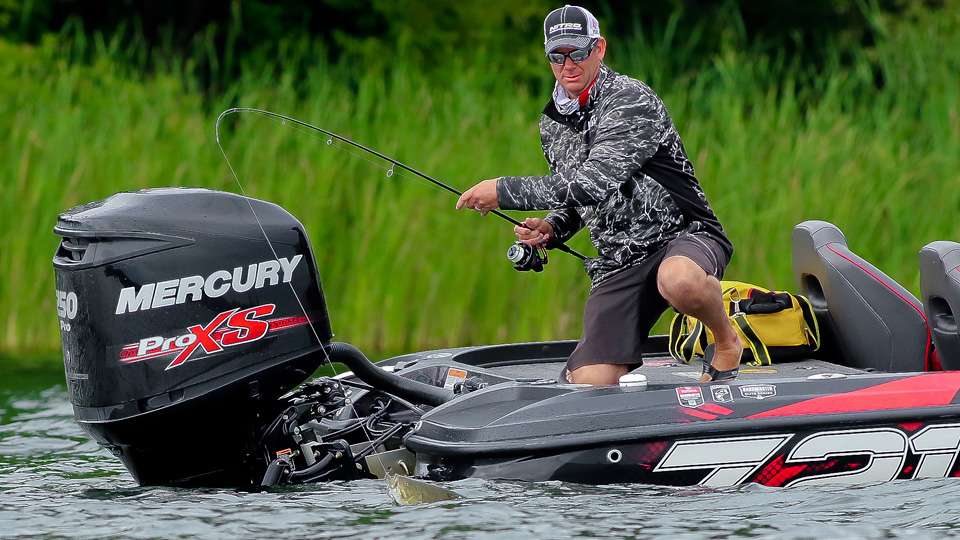
Most bass pros credit their success to their early days of chasing bass.
While this may come as a surprise to most of you, many of my river skills were honed from fishing for trout and salmon.
The knowledge I gained as a kid while fishing the streams and rivers of Michigan for several species of trout and migrating salmon came into play last week when I won at the St. Lawrence River.
The time I spent learning how trout and salmon use current, position themselves in it and react to lures presented to them has been helpful throughout my career. I realize trout aren’t bass, but most predator fish utilize similar tactics to survive in a current-rich environment.
And the St. Lawrence River is just that. With a current blowing downstream at a 3 to 5 mph clip, bass – especially smallmouth – held in very specific locations.
Trout and salmon fishing taught me how current flows around objects, such as rocks, logs and high spots on the bottom, and how bass use those areas to block the current and feed more effectively. Those same rules apply in swift currents or in places where the current is more subtle, such as on tidal bodies.
If there is an object in the water to create that current break, there is always a spot in front or even behind it where the water is dead. That’s because the current hits the object, deflects over the top or around it, giving the fish a place to tuck in below.
The faster the current, the more the bass are likely found on the downstream side. The key when fishing current is to find those “dead spots” bass can use to ambush bait fish without expending a lot of energy.
Wind can affect your presentation as well. It can push the current faster or slower, depending on the direction, and if it’s blowing into the side of the current it, it can move your bait away from the intended target. You have to take all of that into consideration.
You also need a natural presentation, especially where the water is as clear as it was in New York. I can’t fish effectively with heavy line or braid, because it creates more drag and disables your ability to provide accurate presentations. When the line gets a big bow, the current catches it and pulls the bait away.
That’s why I used mostly 6-pound line and some 8 in last week’s event. It was a huge difference in my ability to fish effectively.
In addition, it’s important follow the bait along with the speed of the current. You do that by having the precise amount of weight so the bait flows naturally. Too much weight and it moves too slowly and too little it moves to fast.
That’s why drop shotting works so well in heavy current like we had in the tournament. There is so much on the bottom that you have to select a sinker that doesn’t snag yet dribbles along the bottom at the same speed of the current. Do that and the bait moves naturally overhead. That is extremely critical!
If you’ve been having problems catching fish in the rivers near you, spend time analyzing the current, looking for those current breaks and try offering the fish a more natural presentation.
It’s all about the attitude!
Kevin VanDam’s column appears weekly on Bassmaster.com. You can also find him on Facebook, Twitter and Instagram.

